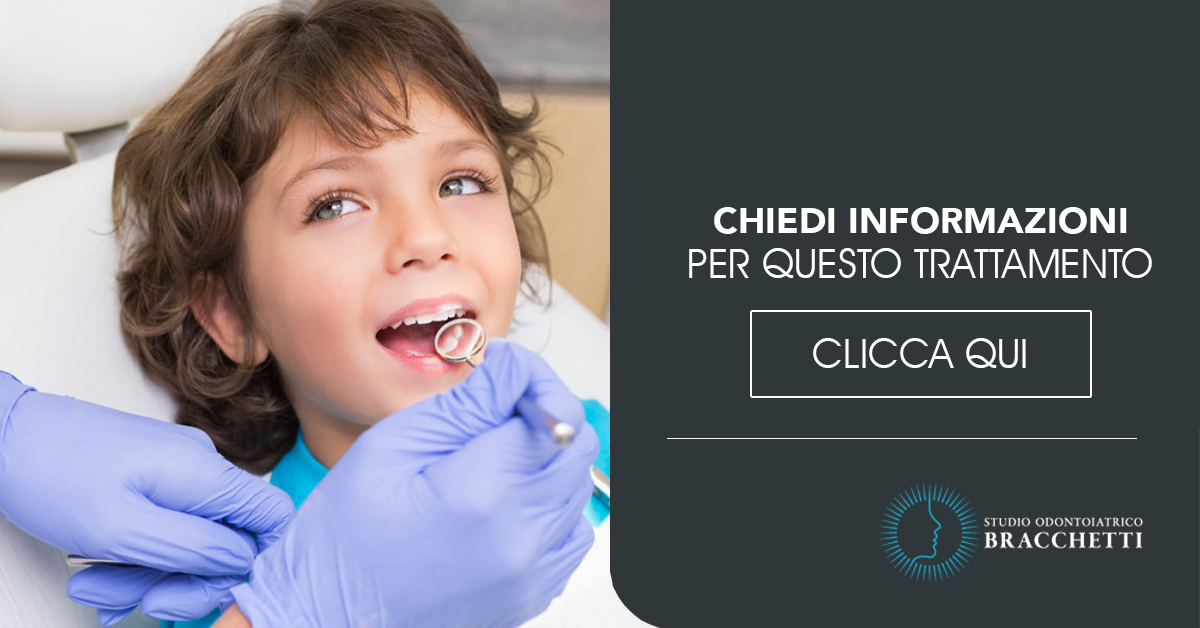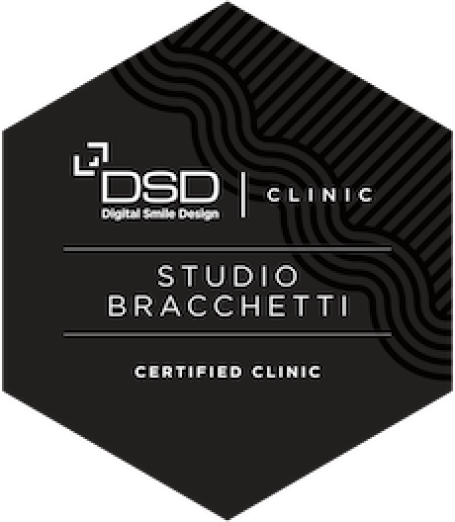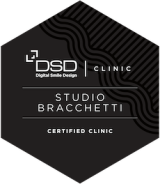Interception and correction of bad habits
The task of the parent and the dentist is to identify any flawed (wrong) habits of the child, which, if ignored, could lead to changes in the teeth and shape of the face over time.
The most common bad habits found in children are:
- atypical swallowing
- oral breathing
- thumb sucking
- chewing on objects such as pencils, pens
The interruption of these harmful habits should take place before the age of 3 to avoid the onset of problems in the development of the jaws and dental arches. Furthermore, children over the age of 4 show greater difficulty in giving up these habits.
It also takes several months to stop a habit, so it is good to intervene immediately, as soon as it is identified. The perseverance and determination of the parents are essential to help the child in this phase.
Thumb sucking (the baby sucks their thumb)
The most common bad habit is "thumb sucking" (or sucking on a pacifier) which, when present, usually lasts up to 3–4 years of age by which time it usually stops.
In babies, the desire to suck is linked to the infant feeding mechanism. The persistence of this need beyond the physiological term of 3-4 years can easily lead to the establishment of the "cross bite:" the positioning of the thumb on the palate in fact leads to the modification of the natural position of the tongue and its lowering; the lower incisors move in the lingual direction, while the upper ones tilt outwards; the upper arch contracts and gives rise to a dental occlusion in which, when the child closes their mouth, the teeth of the upper arch close inside those of the lower arch called "posterior crossbite."
Atypical swallowing
The way we swallow changes over the course of our life. When infantile swallowing is maintained and does not naturally evolve towards adulthood, we speak of "atypical swallowing."
A newborn baby, while breastfeeding, places it's tongue between toothless dental arches to swallow; but after the milk teeth come in the correct positioning of the tongue is on the palate behind the upper incisors. In children with atypical swallowing, the tongue continues to be positioned between the arches, despite the presence of teeth in the arch.
The cause of this habit is multifactorial, that is, it depends on various conditions, such as prolonged breastfeeding, thumb sucking or using a pacifier, oral breathing, short lingual frenum, etc. Failure to stop this habit can lead to teeth erupting incorrectly, the displacement of permanent teeth that have just appeared, chewing problems, speech defects, and aesthetic alterations.
Oral breathing
Another frequently encountered vice is oral breathing, a pathological condition in which breathing occurs through the mouth and not through the nose.
In patients with hypertrophy of the adenoids or with diseases that cause chronic nasal obstruction (obstruction that makes it difficult for air to pass through the nose), breathing takes place mainly orally. This incorrect breathing model, if not corrected promptly (with resolution of the underlying problem), can lead to an alteration of the development of the dento-skeletal structures and negative changes in facial growth.
In these patients there may be an increase in the vertical dimension of the face, giving it the characteristic elongated appearance; the jaw is positioned lower and back to allow the passage of air through the mouth, the position of the tongue is lowered and this can cause a transverse developmental defect of the upper arch.
How can you prevent bad habits in childhood from compromising your teeth?
There are a few tricks to get your baby to stop sucking:
- provide positive reinforcement (baby gets a reward when not suckling)
- reduce the pleasantness of sucking and make it a negative experience (coat something bitter on the thumb or pacifier, wool glove on the hand, etc)
- apply orthodontic devices capable of mechanically preventing sucking (palatine grid fixed on a removable plate or, in more difficult cases, fixed palatine grid, welded to orthodontic bands cemented to the molars)
In solving the problem, the psychological aspect of the child should not be underestimated, as the persistence of some typical early childhood habits can hide problems related to emotional development.
The approach to the child must be extremely serene on the part of the parents, pediatrician and dentist. a careful evaluation of the child from a psychological and dental point of view makes it possible to identify the right moment and way to suspend the behavior in the least traumatic way possible.
Correct atypical swallowing.
To correct atypical swallowing, the first step is to understand the cause of the incorrect positioning of the tongue. Having eliminated the causes whose permanence would be an obstacle to the success of the treatment, correction often takes place through myofunctional therapy: a set of exercises aimed at correcting the posture of the tongue that allows for the automation of the correct swallowing model. In some cases, fixed or removable orthodontic equipment is also used that keep the tongue in position within the dental arches.
A correct diagnosis is the prerequisite for effective orthodontic therapy. Once the cause has been eliminated and the swallowing mechanism has been reset, the dentist can correct the possible consequences of the continuation of the bad habit. This is based on the seriousness of the problem and the dentist can opt for rapid palatal expansion recreating the right volume and the right palatal shape, allowing the resumption of the right respiratory function.
Is it okay to leave a pacifier and bottle when the baby falls asleep?
As for the pacifier, it depends on age. Up to 2, maximum 3 years of age is acceptable, in the sense that the effects on the dentition are still reversible and the correct growth pattern is restored within a few months. After this age, the use of the pacifier tends to introduce dental compensations that will gradually turn into real more or less serious malocclusions that will require correction with orthodontic equipment.
As for the bottle, the type of mechanism it triggers is the same as sucking the pacifier and the thumb, so consequences are the same. The real problem is with the contents of the bottle! Any type of drink, excluding water and therefore including milk, rich in sugars (not to mention tea, fruit juices, etc.), which is introduced into the oral cavity after evening brushing and which therefore involves the permanence of the substance on the teeth all night, carries a very high risk of decay on deciduous teeth. There is a very well-defined clinical picture of varying severity called "bottle caries," which involves a variable, and more or less extensive number of deciduous teeth depending on the case, closely related to the duration of the habit of going to bed with the baby bottle.
In conclusion, the key to success in the treatment of bad habits lies in the early interception of them, but a decisive role is also played by the motivation and collaboration of the young patient, a factor capable of providing very satisfactory results for the dentist both on a human and professional level.
If you would like to make an appointment at the Bracchetti Dental Clinic in Milan click Request form - Or you can write us on whatsapp and if you want to talk to the secretary you can do so easily by calling the office by clicking here
















